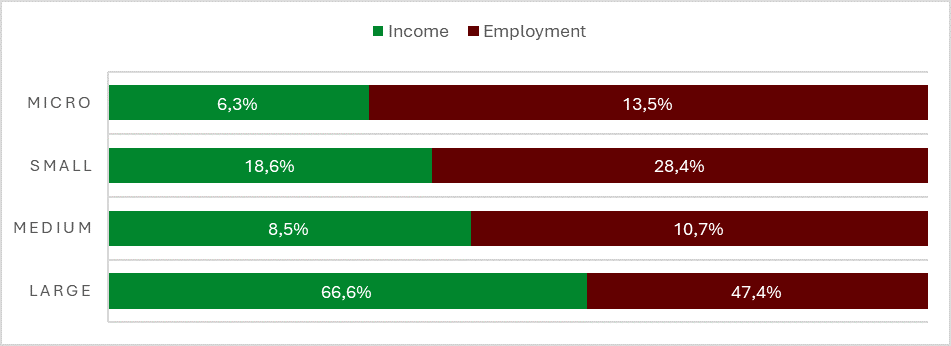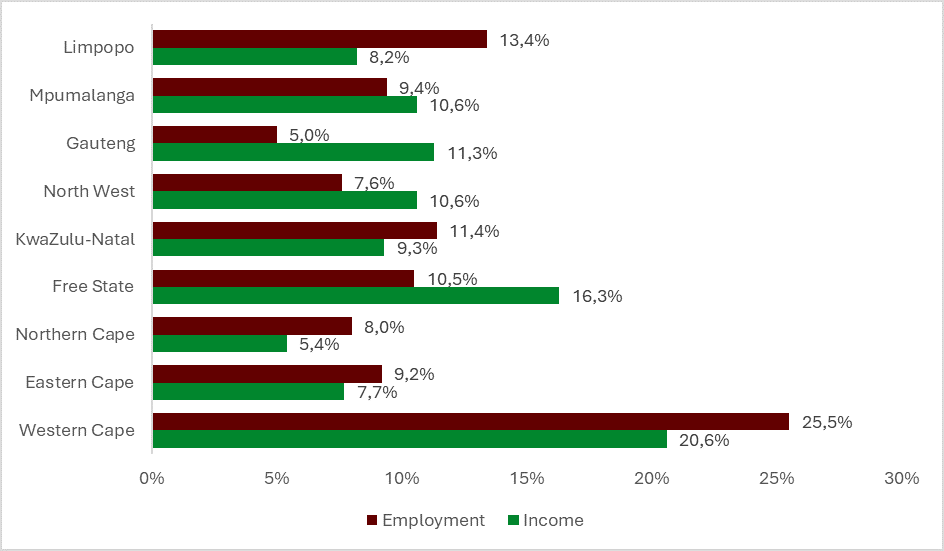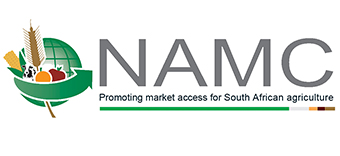EMPLOYMENT STRUCTURAL PATTERNS: AGRICULTURAL INDUSTRY STATISTICS, 2023
By: Bernard Manganyi and Matume Maila
- Background
Statistics South Africa has published estimates of agricultural financial and production statistics on June 26 2025. This publication covered the financial year July 1, 2022, to June 30, 2023. This publication presents a revealing picture of employment dynamics within the South African commercial farming landscape. The survey only includes VAT-registered enterprises that specialise in crop growing, market gardening, horticulture, animal farming, agricultural and animal husbandry services (excluding veterinary activities), hunting, trapping, and game propagation, as well as the production of organic fertilisers. It excludes all informal agricultural activity and services. According to the survey results, the total number of individuals employed in the agricultural sector amounted to 770,000 in 2023, up from 753,000 in 2018. These findings reflect a compound annual growth rate of only 0.5%, suggesting that employment expansion has not kept pace with overall sectoral income growth. Despite the sector’s rising contribution to GDP and export earnings, job creation has remained largely stagnant, suggesting an increasing reliance on mechanisation and capital-intensive production systems that do not absorb labour at scale.
- Dualism in Enterprise Structure
The total income for the agricultural industry in 2023 was R491.7 billion. In 2023, large agricultural enterprises with an annual turnover exceeding R35 million accounted for 66.6% of the total income. However, they only employed 47.4% of the workforce. In contrast, small, medium, and micro-sized enterprises (SMMEs) contributed 33.4% of the income but employed 52.6% of the labour force. These disparities underscore the disproportionate importance that small, resource-constrained enterprises play in job creation, despite earning lower financial returns. The growing concentration of income among high-turnover entities raises concerns about the long-term inclusivity and sustainability of agricultural growth.

Figure 1: Percentage contribution of income and employment in the agricultural large sample survey by enterprise size, 2023
Source: STATSSA (2025)
- Regional Disparities in Income and Employment
The provincial employment structure in South African agriculture continues to reflect structural dynamics. Limpopo demonstrates the greatest mismatch, contributing 13.4% to total agricultural employment but only 8.2% to income, suggesting the prevalence of labour-intensive systems. Western Cape follows, with 25.5% of employment and 20.6% of income, indicating a more balanced contribution where labour intensity aligns with commercial value. Similarly, Northern Cape contributed 8.0% to employment and 5.4% to income, while KwaZulu-Natal accounted for 11.4% of employment and 9.3% of income. These provinces, though not income-dominant, are significant labour absorbers and central to rural livelihoods. In contrast, Gauteng presented the most distinct disparity in the opposite direction, contributing 11.3% to income but only 5.0% to employment, highlighting the capital-intensive nature of its agricultural and agro-processing activities. The Free State similarly contributed 16.3% of income, versus 10.5% of employment, and the North West delivered 10.6% of income with just 7.6% of employment.

Figure 2: Percentage contribution of income and employment by province in the agricultural large sample survey, 2023
Source: STATSSA (2025)
- Activity Disparities in Income and Employment
The survey also found income and employment disparities across production activities. Horticulture employed 40.4% of the workforce but contributed only 21% of the income, making it the most labour-absorbing activity. In contrast, the farming of animals generated 37.8% of the income while employing only 17.8% of the workers. This finding highlights a structural imbalance in which high-income sectors do not translate into widespread employment. Supporting labour-intensive sectors, such as horticulture, could help bridge this divide, particularly among vulnerable rural populations who rely on such work for their livelihoods.
- Gender, duration of employment, roles
Gender disparities remain significant within the agricultural workforce. While women gained slightly more jobs between 2018 and 2023, they remain underrepresented in senior roles. Only 15.2% of farm managers were female in 2023, and most women continued to be concentrated in general labour roles. Limpopo and the Western Cape illustrate this gap, where female labour participation is strong but rarely translates into leadership positions. These trends reflect persistent barriers to gender equity and underscore the need for targeted support to enhance women’s representation in higher occupational categories.
Part-time and seasonal employment declined by 7.6% nationally, suggesting increased mechanisation or restructuring of employment contracts. In provinces such as Limpopo and the Eastern Cape, these jobs remain essential. At the same time, sharp declines in the Northern Cape and Free State may reflect reduced labour demand or technological substitution. The decline in flexible employment options raises questions about the sector’s ability to provide diverse work opportunities across regions.
- Concluding Remarks
The 2023 data confirms that while agriculture continues to grow in value, the employment structure remains unequal and fragmented. Large enterprises and high-return activities generate a large proportion of the income, while smaller players and low-return industries provide greater employment by numbers. Gender and regional inequalities persist, and the sector’s labour contribution is failing to match its economic significance. To address these challenges, policy responses should prioritise labour-intensive subsectors as envisaged in the National Development Plan, improve support for small enterprises, and address gender gaps in senior roles. Strengthening employment in agriculture is crucial to unlocking its full potential in rural development and fostering a more inclusive economy as envisaged in the Agriculture and Agro-processing Master Plan.



